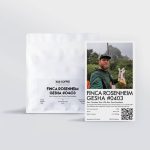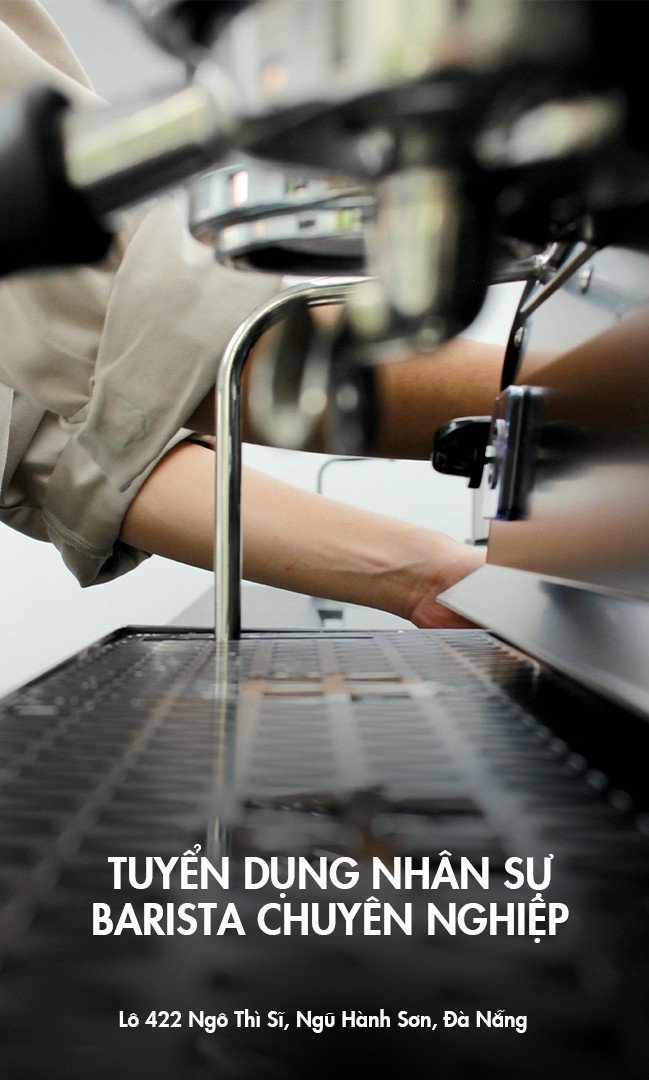OVERCOMING THE CHALLENGES
OF SOURCING COFFEE FROM THE DRC
In 2018, the Democratic Republic of the Congo produced almost 24 million kilograms of coffee. Although this was a 4% rise on the figure for 2017 (22.9 million kilograms) and a staggering increase on the 2016 figure (16.7 million kilograms), in 1989, over 100 million kilograms of coffee were grown in the country.
Decades of political instability and civil war have had a significant impact on the economic prosperity of the DRC. Today, armed conflict continues in the region around Lake Kivu, which lies on the border between the DRC and Rwanda. It is also one of the country’s most significant regions for agriculture, including coffee production.
However, despite these obstacles and thanks to a number of initiatives from both within and beyond the DRC, its reputation as an origin is growing. The Kivu and Ituri regions in particular provide healthy volcanic soil and elevation suitable for growing arabica plants.
To improve knowledge and awareness about the DRC as an origin, Atlas Coffee Importers, ÉLAN RDC, Cooperative Coffees and Higher Grounds Trading are hosting a three-part free webinar series for coffee roasters entitled “Exploring Congolese Coffee”, with the first taking place on September 30.

View of the Numbi, a town in South Kivu, Democratic Republic of the Congo, en route to Nyabirehe
DRC COFFEE: WHAT IS IT LIKE?
Before looking at why Congolese coffee can be challenging to source, let’s examine some opinions about it. Susan Heller Evenson is a trader at Atlas Coffee Importers. She says that “for those who source [Congolese coffee], it is deeply loved and appreciated”.
“The cupping profile is unique, and most coffee co-operatives in the DRC are making a significant impact in their communities,” Susan tells me. “Coffee in the DRC serves as a stabilising economic force.”
Kyle Tush is a buyer and quality analyst at Counter Culture Coffee. He says: “There’s been an enormous amount of development work in the coffee sector in the DRC over the past five years. It’s truly one of the last few untapped regions in the world for stunning arabica.”
“It’s a unique [origin], very special because of the varieties that can be found there and because of its history.”
Susan says that the flavour profile of Congolese coffee is “unlike any other coffee [she’s] tried” and that it often has tasting notes of “prune, spice, chocolate, black tea and blackberries”.

Rebuild Women’s Hope, Boza Washing Station, Idjwi Island, DRC
WHY CAN IT BE DIFFICULT TO SOURCE COFFEE FROM THE DRC?
Despite the fact Congolese coffee offers a cup profile described as “diverse and unique”, its industry does still face some issues, as well as a poor reputation among some buyers. I spoke to Susan and Kyle to understand more about these concerns, and to look at what the wider industry is doing to address them.
PRICING & FINANCING
Both Kyle and Susan agree that pricing is an issue when it comes to Congolese coffee. Producers in the DRC often face uncertainty in their operating costs. This alongside fluctuations in the exchange rate can make pricing unpredictable, and often high.
“The price is high, so the coffee has to score very highly to be sold as a single-origin,” Susan says. “If it scores below around 86, for example, roasters might use it in a blend, but it’s expensive for that.”
As a result, Susan says that “price-conscious roasters will often go with an origin offering consistently lower-priced coffees unless they have a personal commitment to or interest in the region”.
She adds that financing is also an issue on the producer’s side. In the DRC – as well as a number of other producing countries – co-operatives and groups often need contracts in-hand to secure pre-harvest financing. “A more casual ‘letter of intent’ used to be enough,” she says.
“However, if we’re sourcing on behalf of a roaster, this means that we often ask to secure the purchase not long after they have received the previous year’s harvest,” she explains. “Sometimes they can’t commit to next year’s volumes as early as sellers need.”

Rebuild Women’s Hope, Boza Washing Station, Idjwi Island, DRC
REPUTATION, AWARENESS & CONSISTENCY
Kevin Wilkins is Senior Technical Advisory for Specialty Crops at ÉLAN RDC, a private sector development programme that aims to improve market outcomes in the DRC. He tells me that consistency is one of the biggest issues the industry faces, and that has affected the reputation of Congolese coffee.
He notes that there is a lot of uncertainty in everything from “operational costs and shipment timelines to production, treatment, and storage-related issues”. While this does have an impact on how the country’s coffee industry is viewed, Kevin notes that it is improving quickly. “In many cases, buyers are able to limit the number or the severity of these issues.”
For Susan, the issue is often not a poor reputation, but simply a lack of awareness of the origin among the wider coffee community. “The DRC produces some of the highest quality specialty coffee in the world, and yet many roasters and consumers are not aware of it,” she says. “The coffee is there, and it’s very high-quality.”
Kyle adds that “producers [in the DRC] are sorely lacking market access”, and that he hopes to see “more demand from importers and buyers” going forward.

Riziki Kacheranga, 32, tends to her coffee plants. She is a single mother of three children. She is also the caretaker of her elderly mother, and a fourth child who belongs to a relative. She is part of the GALS program in Nyabirehe village
INFRASTRUCTURE, LOGISTICS & ACCESS
Low economic stability since the DRC declared independence in 1960 has meant that the country’s infrastructure and logistics still require some development.
”The logistics of getting [Congolese] coffee to market are difficult, to say the least,” Kyle says, noting that he has seen issues with logistics and slow shipments when sourcing coffee from the DRC. “Coffee needs to be moved quickly.”
Susan agrees: “Logistical delays can greatly impact coffee.” She explains that in the DRC, “overland freight [takes] much longer”, and coffee can “often be delayed due to weather or paperwork or instability”. If coffee is held up for too long at a port or a border, its moisture levels can increase and cause cup quality to suffer.
However, she does point out that Congolese infrastructure and logistics are improving. “We have seen record shipment timing in recent years, ensuring reliable arrivals for clients.”
Finally, Kevin notes that access to the origin can be difficult for potential buyers. “It’s imperative that prospective buyers can travel to/from and enter/exit an origin without too many logistical or regulatory hurdles.” He says that while some are willing to work through some visa and travel-related issues, there is as yet no permanent solution in place.

Fikiri picks coffee cherries from his plot in the village of Nyakalende in South Kivu
HOW DO WE IMPROVE THINGS?
Kyle, Kevin, and Susan all agree that raising awareness among the wider supply chain – including roasters and consumers – is key. “The biggest challenge is the lack of knowledge of the DRC as an origin and as a producer of excellent specialty coffee,” Susan says.
“When the DRC is in the news, it’s usually not positive,” Susan tells me. “We need to broaden the picture of what people think about when they think of both the DRC and specialty Congolese coffee.”
Improving awareness of the origin is one of the key aims of the Exploring Congolese Coffeewebinar series. The three-part series will include industry association representatives, Congolese coffee producers, and buyers and importers from markets around the world.
As well as Congolese coffee producers and co-operatives, the panel will include representatives from some of the organisers (Higher Grounds, Atlas Coffee Importers). It will also feature speakers from other organisations, including the African Fine Coffees Association, Counter Culture Coffee, and Volcafe Select.
As well as this, Kyle says he would like to see “more direct relationships with Congolese co-operatives that facilitate good communication”. He adds that there should ideally be a particular focus on forming relationships: “Co-ops need to know what happens to the coffee when it leaves thec country. We need direct engagement between co-operatives and buyers.”
Susan agrees that good communication is key. “Almost all the groups I work with are good communicators,” she says. “They know that they can expect a reply from me within a day or so, and that I can expect the same. Long delays can lead to fewer sales.”

Rebuild Women’s Hope, Hala Washing Station, Idjwi Island, DRC
While sourcing Congolese coffee can be challenging, things are improving for coffee producers in the DRC. Infrastructure and logistics are getting better, and shipping times are more reliable and consistent than they ever have been.
According to these interviewees, better recognition as an origin, further improvement infrastructure and logistics, and a greater focus on clear communication will altogether support and improve the sourcing process.
With development in these areas, more buyers will be able to build stronger relationships with producers and co-ops to bring Congolese coffee to a wider audience.
Photo credits: Diana Zeyneb Alhindawi, Susan Heller Evenson
Please note: ÉLAN RDC is a sponsor of Perfect Daily Grind.
Source: Perfect Daily Grind
Link: https://perfectdailygrind.com/2020/09/overcoming-the-challenges-of-sourcing-coffee-from-the-drc/







